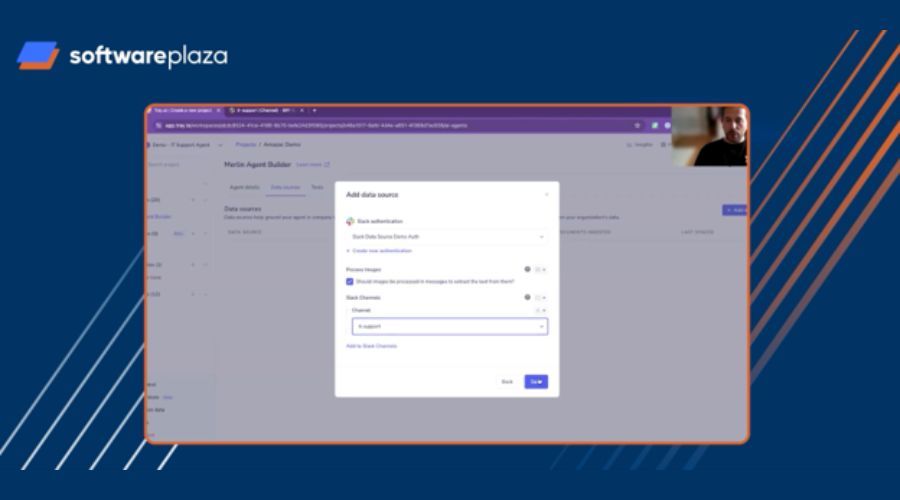Two decades ago, before "AI agent" was a buzzword, Tray.ai co-founder and CTO Alistister Russell was immersed in the Semantic Web, a vision championed by Tim Berners-Lee to make the web more structured and machine-understandable. Working within the Web Science Research Initiative at MIT and the University of Southampton, Russell explored how computers could reason over data, enabling richer human-computer interactions.
But adoption challenges loomed. Convincing organizations to embrace rigid semantic standards proved slow. Meanwhile, the rise of APIs organically unlocked data accessibility, paving the way for modern integrations. Fast forward, large language models (LLMs) now achieve semantic understanding without manual tagging, learning from vast text corpora instead of rigid ontologies. This shift set the stage for Tray.ai’s next act: enabling these models not just to “think,” but to act.
Tray.ai’s evolution: from low-code automation to agentic AI
Founded over a decade ago, Tray began as an AI-ready integration Platform-as-a-Service (iPaaS), designed to simplify API connectivity and automate repetitive workflows. Early versions focused on ETL and traditional automation, helping businesses orchestrate processes without writing endless custom scripts.
The turning point came with the emergence of LLMs. These models brought unprecedented reasoning capabilities, but lacked the ability to execute actions in real systems. Tray saw the opportunity to bridge this gap. The team shifted towards agentic AI, equipping intelligent models with “arms and legs” to perform tasks in context, at scale, and under governance.
What is Agentic AI, and how is it different from chatbots?
While chatbots can answer questions and hold conversations, agentic AI is about action. An AI agent doesn’t just suggest how to reset a password; it can perform the reset, respecting company policies and security constraints. Key distinctions:
- Dynamic adaptability – Agents respond to changing inputs and contexts, not just predefined scripts.
- Tool-use capability – Agents can invoke low-level tools or APIs to perform tasks.
- Context awareness – Grounded in organizational data, they make decisions with relevant background information.
- Outcome orientation – The goal is task completion, not just information retrieval.
Real-world Agentic AI workflows
Tray.ai’s customers use agentic AI across industries, but IT service management is a standout case:
- Ticket deflection – Agents deflect up to 70% of repetitive IT tickets by recognizing recurring issues in Slack channels or service desks.
- Automated access provisioning – Based on team role and policy, agents can grant access to tools like GitHub or DocuSign without manual IT intervention.
- Secure multi-factor reset – Automating MFA reset workflows, including policy-driven approvals.
Beyond IT, Tray’s agents are used in DevOps, provisioning cloud environments from Terraform templates, and anomaly detection, where agents spot and remediate workflow failures.
The governance & security imperative
Empowering autonomous agents raises the stakes for governance. Tray applies the principle of least privilege to ensure agents operate only within authorized scopes. Role-based access, human-in-the-loop approvals for sensitive tasks, and deep monitoring/observability are built into the platform.
This isn’t new for Tray, the same challenges exist in traditional iPaaS, and a decade of experience informs their approach. The difference now is the autonomy of the actors. Without guardrails, agents could trigger actions with unintended consequences. Tray’s governance features ensure control even as agent deployments scale across teams.
Introducing Merlin: Tray’s agentic AI builder
Merlin sits atop Tray’s robust low-code integration platform, bringing together everything needed to build, deploy, and govern AI agents.
Core Capabilities:
- Scope & personality definition – Craft system prompts that set an agent’s role, tone, and objectives.
- Model flexibility – Connect to leading LLM providers, or use Tray’s native models for testing.
- Data sources for context – Ground agents in your company’s knowledge (Slack channels, Google Drive folders, policies).
- Action tools – Assign agents low-code tools for executing tasks, ranging from SaaS operations to infrastructure changes.
- Monitoring & debugging – Inspect reasoning chains, see why actions were taken, and view downstream impacts.
- Composable architecture – Build reusable tools, call other agents, and orchestrate multi-agent workflows.
The architecture advantage: stateless, serverless, scalable
Unlike container-bound automation solutions, Tray’s platform uses a distributed, serverless architecture. Each workflow step executes in isolation as a function, reducing resource waste, especially important when LLM calls can be slow. This design enables near-instant start times, effortless scaling, and the composability needed for complex, multi-agent orchestration.
Composable workflows: building complex systems from building blocks
Merlin embraces composability, letting users assemble agents from reusable workflows and connectors. For example:
- An IT support agent might call a DevOps agent to spin up test environments.
- A compliance agent could use the same document-parsing workflow as a procurement agent, without duplication.
This approach accelerates development, encourages best-practice sharing, and supports agent-to-agent (A2A) interactions.
The future: interoperability and standards
As the agentic AI ecosystem grows, standardization is emerging through protocols like MCP (Model Context Protocol) and A2A. These aim to make agents interoperable across platforms. Tray is leaning in, exposing its 700+ service connectors via a connectivity API that aligns with these standards.
Yet, rapid protocol evolution and recent security incidents show the need for careful rollout. Governance, observability, and security must be integral from day one, especially as networks of cooperating agents become the norm.
Why businesses adopt Agentic AI
Organizations come to Tray in two main states:
- Process pain – They know bottlenecks exist and see AI as the path to faster, more competitive operations.
- Curiosity and opportunity – They have functioning systems but recognize the transformative potential of agentic AI.
In both cases, early proofs often lead to enterprise-wide rollouts. Once teams see an agent not only answer a question but take an action, securely, contextually, and automatically, the “aha moment” arrives.
Conclusion
Tray.ai’s journey from semantic web ideals to agentic AI reflects a broader industry arc, from structured data dreams to adaptive, action-oriented AI. With Merlin, they’ve built more than an agent builder; they’ve created a secure, composable, and scalable foundation for the next generation of business automation.
In a world where LLMs can already “think,” Tray is ensuring they can act responsibly, contextually, and at enterprise scale.
This blog is based on a webinar with Alistair Russell, Co-founder and CTO of Tray.ai. To watch the full video, click here.






